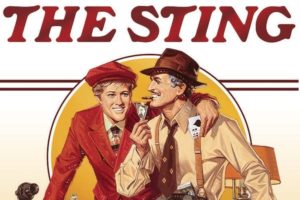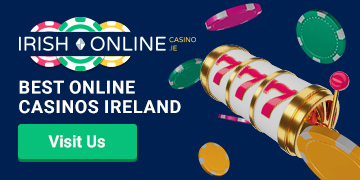 Featuring an all-star cast, headed by Paul Newman, Robert Redford, Robert Shaw, ‘The Sting’ is a stylish, meticulously detailed crime drama film, released by Universal Pictures in 1973. Set in Depression-era Illinois, principally Chicago, ‘The Sting’ was directed by George Roy Hill,who had previously directed Newman and Redford in ‘Butch Cassidy and the Sundance Kid’ four years earlier.
Featuring an all-star cast, headed by Paul Newman, Robert Redford, Robert Shaw, ‘The Sting’ is a stylish, meticulously detailed crime drama film, released by Universal Pictures in 1973. Set in Depression-era Illinois, principally Chicago, ‘The Sting’ was directed by George Roy Hill,who had previously directed Newman and Redford in ‘Butch Cassidy and the Sundance Kid’ four years earlier.
Seeking to avenge the murder of his partner Luther Coleman (Robert Earl Jones), petty swindler Johnny Hooker (Redford) heads to Chicago to seek out fellow grifter Henry Gondorff (Newman). Together, they perpetrate an elaborate hoax – the ‘big con’ – with the intention of financially ruining
criminal overlord Doyle Lonnegan, whose henchmen were responsible for the death of Luther Coleman.
Resurrecting an obsolete scam, known as ‘The Wire’, and aided and abetted by a cast of characters, not least bogus tipster Kid Twist (Harold Gould), Gondorrf and Hooker create a fake betting parlour and convince Lonnegan to bet $500,000 on a horse called Lucky Dan to win. Just before the supposed ‘off’, Twist informs Lonnegan that Lucky Dan will finish second and, as he attempts to retrieve his money, FBI agents raid the betting parlour.
Agent Polk (Dana Elcar) – who, unbeknown to the audience, is part of the con – tells Hooker he can leave and Gondorff, apparently betrayed by his partner in crime, shoots Hooker in the back. Polk shoots Gondorff and, in the commotion, Agent Synder (Charles Durning), a real FBI agent who has been pursuing Hooker since early in the film, ushers Lonnegan from the building. Once the coast is clear, Hooker and Gondorff rise, unharmed and smiling, to their feet and riotous celebrations begin.

No relation to the chicken connoisseur!
If you’re a documentary buff you’ll no doubt be well aware of the work of the awkward yet insightful Louis Theroux. One of the most captivating documentaries he’s done has to be his Gambling in Las Vegas episode. There are some real characters there like the mattress empire owner who just couldn’t catch a break, and Dr Martha, the mellow yet mad slot machine enthusiast. This clip from BBC Studies is a good taster of this fast paces, wacky and occasionally unnerving world.
 Craps is a gambling game played with two dice. The game was introduced to New Orleans by the French in the mid-nineteenth century, when it was originally known as ‘Crapaud’s dice’; historically, the nickname for any Frenchman was ‘Johnny Crapaud’ or ‘Johnny Toad’. In the meantime, craps has evolved to become arguably the most common game of its kind in the world.
Craps is a gambling game played with two dice. The game was introduced to New Orleans by the French in the mid-nineteenth century, when it was originally known as ‘Crapaud’s dice’; historically, the nickname for any Frenchman was ‘Johnny Crapaud’ or ‘Johnny Toad’. In the meantime, craps has evolved to become arguably the most common game of its kind in the world.
Craps is played on a dedicated table, typically 12′ long and surrounded by high walls, with rubber pyramids on the back wall to prevent so-called dice control, or precision control. A distinctive craps layout, showing all the various bets available, of which there are literally dozens, is stencilled onto the bed, or ‘floorette’, of the table. A craps table is supervised by a casino employee known as a ‘boxman’. Another employee, known as a ‘stickman’ calls out the roll and returns the dice to the player throwing them, a.k.a. the ‘shooter’, while one or more other employees, known as ‘dealers’, take the bets.
The game of craps is structured around a bet known as the ‘pass line’ bet, which pays 1/1 if successful and offers a competive house edge of just 1.41%. The first roll of the pass sequence is known as the ‘comeout’ roll. A comeout roll of 7 or 11 wins a pass line bet immediately, but 2, 3 or 12, a.k.a. ‘craps’, loses immediately. All other totals establish a target, or ‘point’, which the shooter must roll again before rolling a 7 for the pass line bet to win.


